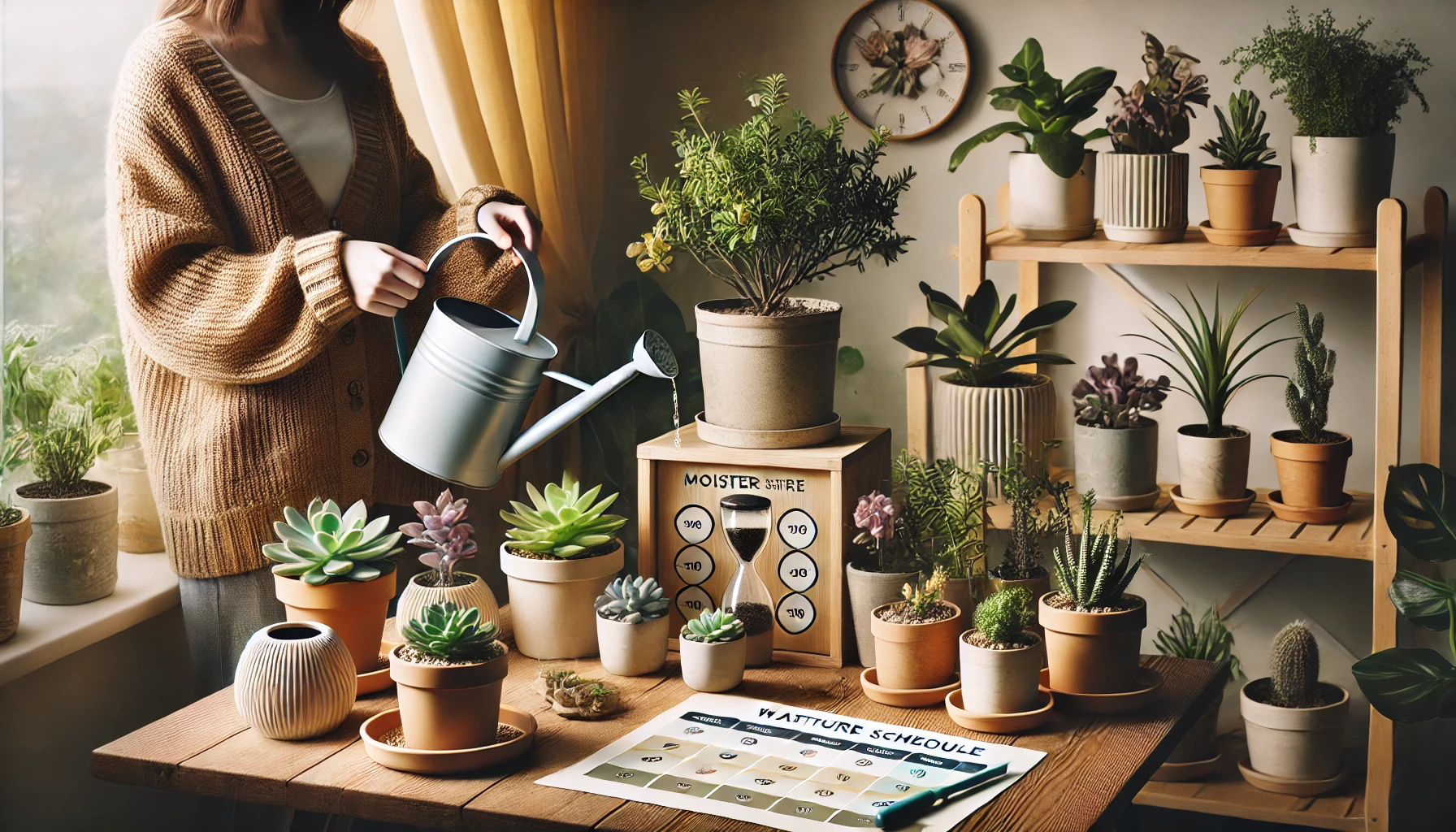Watering is one of the most crucial aspects of plant care, but getting it right can be tricky. Overwatering or underwatering can lead to a range of issues, including root rot, wilting, and stunted growth. A well-balanced watering schedule ensures your plants receive just the right amount of hydration they need to thrive. In this guide, you’ll learn how to create a customized watering routine tailored to your plants and environment.
Why a Balanced Watering Schedule is Important
Plants rely on water for photosynthesis, nutrient transport, and maintaining cell structure. An effective watering schedule:
- Prevents overwatering, which can suffocate roots and cause fungal infections.
- Avoids underwatering, which can lead to dehydration and wilting.
- Promotes consistent growth and vibrant foliage.
- Helps establish a healthy root system.
Factors to Consider When Creating a Watering Schedule
1. Plant Type
Different plants have different water requirements.
- Succulents and Cacti: Require infrequent watering and prefer the soil to dry out completely between waterings.
- Tropical Plants: Thrive in consistently moist soil but not waterlogged conditions. Examples include ferns and calatheas.
- Flowering Plants: Often need more water during blooming seasons.
2. Light Levels
The amount of light a plant receives influences its water needs.
- Bright Light: Plants in direct sunlight dry out faster and may need more frequent watering.
- Low Light: Plants in shaded areas or indoors require less water since the soil retains moisture longer.
3. Temperature and Humidity
Higher temperatures and lower humidity levels increase water evaporation, necessitating more frequent watering. Conversely, cooler temperatures and higher humidity reduce water needs.
4. Pot Size and Material
- Pot Size: Larger pots retain moisture longer, while smaller pots dry out quickly.
- Material: Terracotta pots are porous and wick moisture away from the soil, requiring more frequent watering. Plastic pots retain moisture longer.
5. Growth Stage
Young plants and those in active growth phases need more water than mature or dormant plants.
How to Create a Balanced Watering Schedule
Step 1: Assess Your Plants’ Needs
Group plants with similar water requirements together. For instance, keep succulents separate from tropical plants to simplify your routine.
Step 2: Check the Soil Regularly
Use the finger test to determine when to water. Insert your finger about an inch into the soil—if it feels dry, it’s time to water. For larger plants, use a moisture meter for accuracy.
Step 3: Water Thoroughly
When watering, ensure the soil is evenly saturated. Water until excess drains from the bottom of the pot, then empty the saucer to prevent waterlogging.
Step 4: Adjust for Seasonal Changes
In warmer months, plants require more frequent watering due to increased evaporation and growth. During winter, reduce watering as most plants enter a dormant phase.
Step 5: Create a Schedule
Based on your observations, create a weekly schedule that outlines when and how much to water each plant group. Adjust the schedule as needed for changes in weather or plant growth.
Watering Tips for Common Plant Types
1. Succulents and Cacti
- Water every 2-3 weeks or when the soil is completely dry.
- Use well-draining soil and pots with drainage holes.
2. Tropical Plants
- Water once or twice a week, keeping the soil slightly moist.
- Mist leaves to increase humidity if the air is dry.
3. Flowering Plants
- Increase watering frequency during blooming seasons.
- Avoid splashing water on flowers, as this can lead to fungal issues.
4. Indoor Plants
- Water every 7-10 days, depending on light and temperature conditions.
- Ensure proper drainage to prevent overwatering.
Common Watering Mistakes and How to Avoid Them
- Overwatering: Always check the soil before watering and avoid watering on a fixed schedule without observing the plant’s condition.
- Underwatering: Look for signs like drooping leaves and dry soil, and adjust your routine accordingly.
- Ignoring Drainage: Use pots with drainage holes and avoid letting plants sit in standing water.
- Watering at the Wrong Time: Water in the morning to allow plants to absorb moisture before the heat of the day.
Conclusion
A balanced watering schedule is key to healthy, thriving plants. By understanding your plants’ needs and adjusting for environmental factors, you can create a routine that keeps your greenery happy and hydrated. With consistent care and observation, you’ll enjoy lush, vibrant plants that brighten your home or garden.
